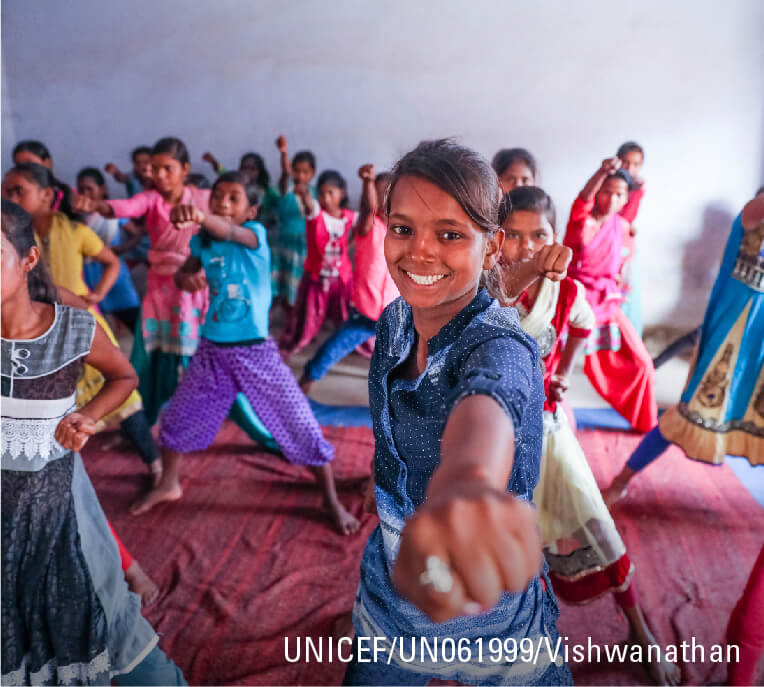
Institutional care refers to the care, protection, rehabilitation and social reintegration of children in difficult and vulnerable circumstances in an institutional setting under the guidance and supervision of child care professionals whose actions are governed by the standards as prescribed by the law of the land. The Juvenile Justice Act 2015 sets standards of care and protection for children for different types of child care institutions. It is important to note that the focus of child care in India as well as in many countries across the world has shifted from institutional to family or community-based child care, as is recommended by international instruments on child care and researches on the issue. This change in approach is reflected in India’s National Policy for Children 2013, which has identified one of its key priorities as ensuring a range of care options that are non-institutional, family-based and community-based. (Standards of Care in Child Care Institutions, Udayan Care and UNICEF India Country Office, 2016)
RESOURCES
-
Educational policy and practice that promote care reform
Miracle Foundation, 2021This article establishes an evidence-based link between a child’s right to education and the right to family. Miracle Foundation works to ensure that every child has an opportunity to grow up in a family, to become a healthy, happy, educated, income-producing person and experience a true sense of belonging. By leveraging its proprietary Thrive Scale™ methodology, the organization facilitates transitioning children from CCIs back with family or family-based - alternative care options, ensuring fulfilment of children’s rights right where they are in the communities. More than 250 children were sent back home from some of Miracle’s partner CCIs during the first wave of the pandemic. Miracle Foundation had been working to build the capacity of its CCI partners on integrated case management, particularly coining the expedited case management to effect safe and permanent reintegration of children during the emergency crisis situation like the pandemic. Within this larger context of upholding a child’s overall right to family, Miracle Foundation is committed to ensuring that there is no disruption in the educational journey of the child as they walk the reintegration path. The paper brings out how in keeping with its belief, and upholding the spirit of the order of the Supreme Court of India, to cater to the educational needs of children who have been restored with families, Miracle Foundation undertook a mix of hybrid/blended educational interventions. The paper highlights Miracle's learnings, insights, and challenges in this journey.
-
Handbook for Facilitation of Restorative Practices in Child Care Institutions
Enfold Proactive Health Trust , 2021Restorative Circles are part of a wider continuum of practices in Restorative Justice, which include both formal and informal processes. These may include restorative conversations, Family Group Conferences, VictimOffender Dialogues, and Restorative Circles. Restorative Circles can also be of many types. This Handbook focuses on the work undertaken by the Restorative Practices Team at Enfold, with children residing in CCIs. Since 2019, the Restorative Practice team at Enfold Proactive Health Trust has been facilitating Restorative Circles with the staff and children of Observation Homes, Place of Safety, and Children’s Homes under the Juvenile Justice (Care and Protection of Children) Act, 2015. This Handbook has been developed to share the insights that have emerged from our experience of facilitating over 250 Circles with children and adults. We believe that Restorative Practice is a way of life, and so our understanding and practice of Restorative Circles will always continue to evolve. Therefore, this Handbook is an initial offering gleaned from our learning so far, learning that has come from engagement with theory and conceptual frameworks and with practice with children and our team through regular Praxis. We hope this will be useful for organisations and individuals who have undergone basic training on Restorative Circles and wish to facilitate Circles with children in CCI or other settings.
-
Tools for Working with Children in Institutional Care
Counsel to Secure Justice , 2021This knowledge resource discusses and provides examples of practice tools, worksheets and calming techniques (in English and Hindi) which counsellors and adults can use while working with children who are in institutional care. These tools are developed and compiled by Counsel to Secure Justice (CSJ) based on experiences and interventions of working with children in institutions. Along with the tools, the paper reviews evidence on the impact of institutionalisation on children and evidence-based interventions that can help mitigate this impact while interweaving CSJ’s experiences and interventions. The latter part of the paper presents tools and calming techniques in the form of worksheets and pictorial representations. The tools and techniques in this resource are part of CSJ’s interventions with children in CCIsincluding in the form of in-person interactions/counselling, virtual interventions during COVID 19 and the restorative circle processes. The tools are developed and compiled to provide visual aid and illustration during counselling and other interactions with children. The exercises can help in engaging children to think and express. The tools can help build rapport and work with children who find it difficult to express their emotions and experiences verbally. The worksheets and calming techniques around coping can help the children practise the coping techniques and equip them to use it for themselves. CSJ understands these tools have limitations and are examples of practice tools and techniques adapted or modified by the counsellors. These are not a replacement of in-person, telephonic, individual or group counselling, therapy or any psychological/psychiatric intervention for severe mental health conditions and disorders. None of these tools can be used for psychological or psychometric testing or diagnosis.